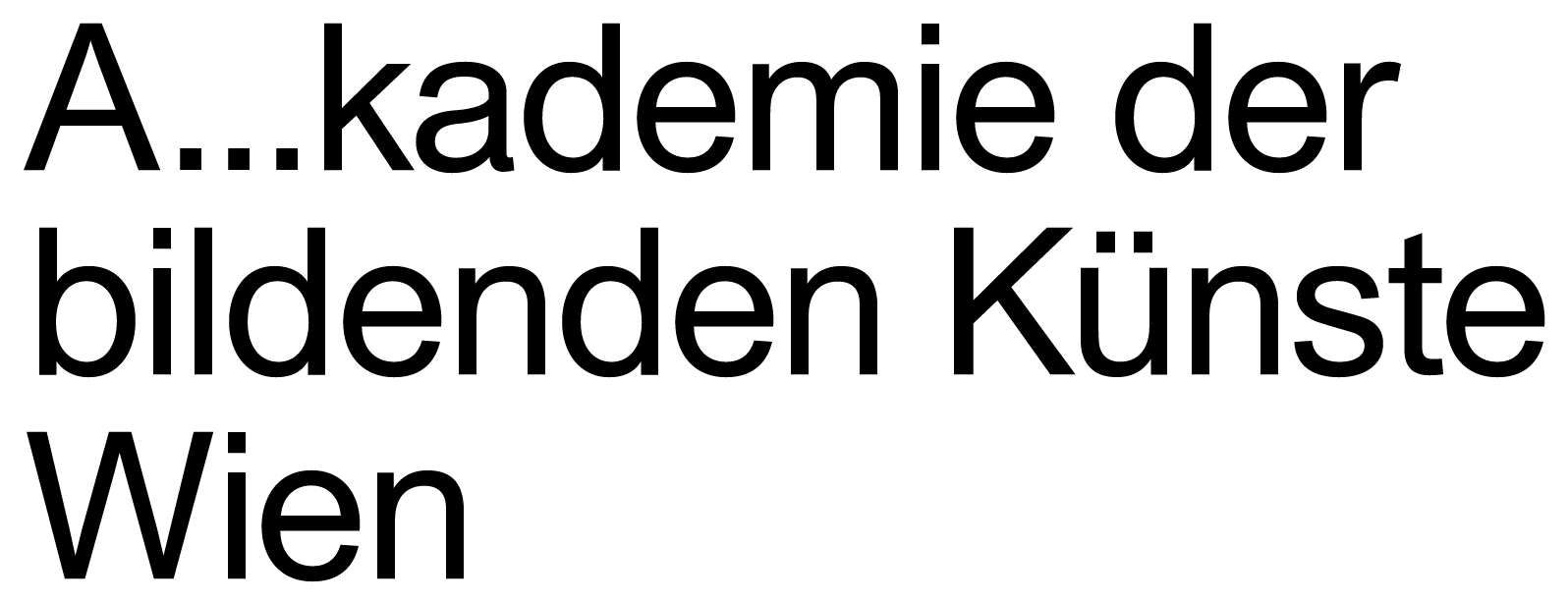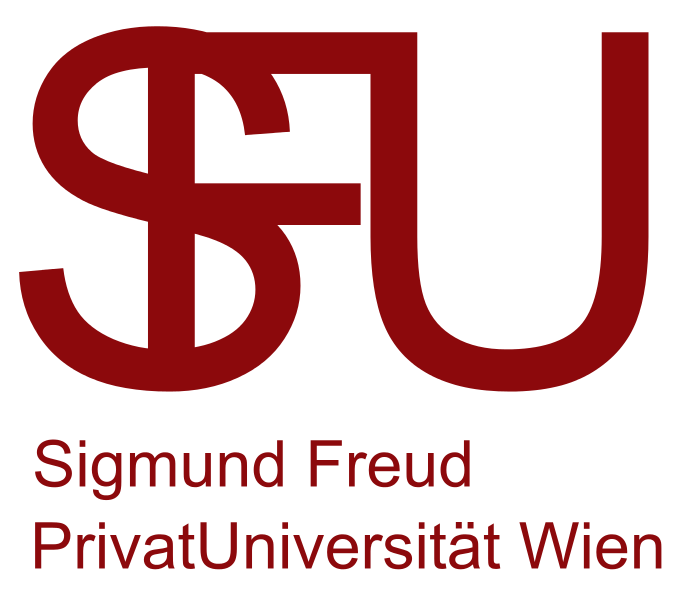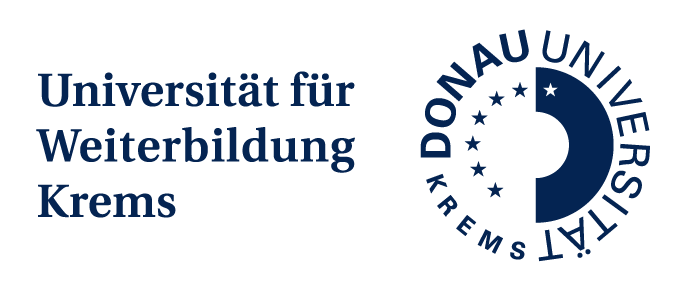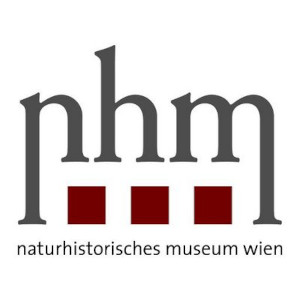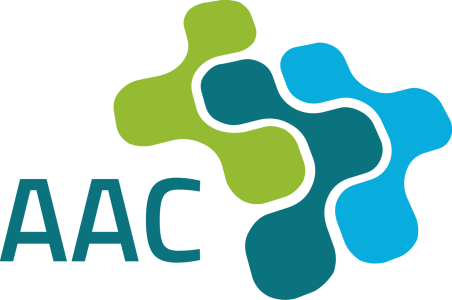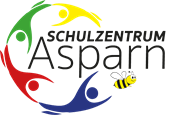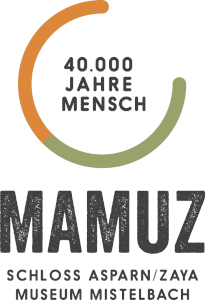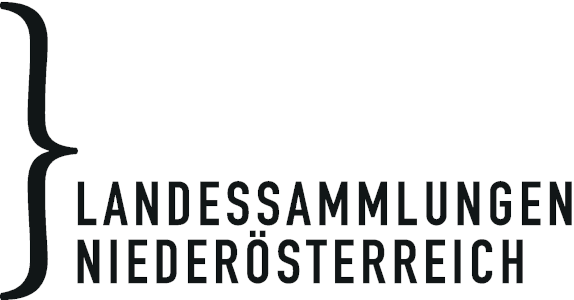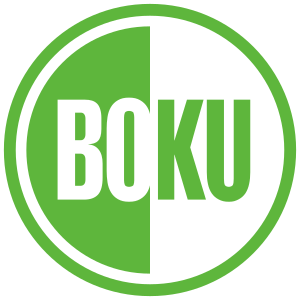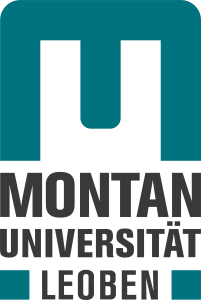Open Reassembly
Many archaeological artifacts today are only preserved in fragments. Reassembling these parts into their original form is therefore an important but challenging task for archaeology.
Computer-assisted methods can facilitate this task or even partially solve it in some cases. However, due to the usually poor preservation of these artifacts and their potential incompleteness, reliable fully automatic reassembly is rarely possible in practice.
The goal of the Open Reassembly project is to design the solution to such complex tasks as a collaborative process involving many participants and in optimal interplay with computer-assisted methods.
Therefore, we invite Citizen Scientists to be part of this process and work together with other hobby archaeologists to solve these challenging puzzles. On this platform, puzzle experts can virtually reassemble the fragments of an ancient artifact together, evaluate the adjustments made by other participants, and thus earn points for good adjustments.
On their first visit, new users can create a new username in the "New Users" menu and start the puzzle. The system randomly assigns new users to one of several virtual puzzle rooms. Under "Existing Users," they can later continue where they left off.
Further information about the artifact, its archaeological background, and helpful tips for reassembly can be found under the "Artifact Details" menu.
Podcast episode
In Janurary 2025, team members Reinhold Preiner, Peter Houska and Stephan Karl gave insights into the project on the Österreich forscht podcast Wissen macht Leute - you can listen to the episode here (in German).
Gallery
-
 View on virtual stone fragments in Open Reassembly View on virtual stone fragments in Open Reassembly
View on virtual stone fragments in Open Reassembly View on virtual stone fragments in Open Reassembly -
 Detail view on some virtual stone fragments in Open Reassembly Detail view on some virtual stone fragments in Open Reassembly
Detail view on some virtual stone fragments in Open Reassembly Detail view on some virtual stone fragments in Open Reassembly
https://www.citizen-science.at/en/immerse/tag/history#sigProId999a219ed1

This project fulfils version 1.1 of the quality criteria for citizen science projects on Österreich forscht.
Stories of Post-extractive F*utures
The shrinking town of Eisenerz lies at the foot of the Erzberg mountain, Austria’s largest and best-known site of extraction of iron ore. The post-industrial town is experiencing a rural exodus, which concerns women in particular. The spatial practices of mining areas have been under-researched using inclusive methods. Mining is predominantly narrated in male, heroic narratives, while counter-narratives of repair, care, reproduction and maintenance are mostly overlooked.
Within this complex field, the project focuses on intersectional feminist perspectives on an area of exhaustion; it will collect feminist post-extractive stories to broaden the perception of mining areas and strengthen the focus on feminist narrations for future perspectives. We ask: Which practices contribute to the continuance of the community? The project shows and discusses the spatial practices of repair amid extraction with multiple actors. We work with local associations to reach diverse groups.
Thinking and knowing with the diverse, often surprising, actors and their practices, the citizen scientists shape the project on several levels: they collect and locate stories of practices, they research private archives, and they report and sometimes even organize. Processes of mutual learning take place in meetings and shared activities, and through the process of transformation into drawings by the East Styrian artist Roswitha Weingrill. Based on collaborative science and an affirmative and inclusive approach, citizens are involved in decisions on many levels, especially concerning their contributions and their representation. The collected knowledge will contribute to creating imaginations of future stories of a liveable community. With the help of artistic methods, these will be illustrated and made accessible in public discussions.
Via strategies of making visible, bringing together, and anticipating and activating futures, and also with the help of artistic tools of knowledge production, this project will show practices as constant reparative counter-practices amid extraction. An ethical, intersectional framework of feminist citizen science will revive the margins of how we know about environmental exploitation to deliver a complex, yet profound, image of a polyphonic Anthropocene that allows for imagining dynamic assemblages after exploitation.
Photo gallery
https://www.citizen-science.at/en/immerse/tag/history#sigProId50bd6c7cc8
This project fulfilled version 1.1 of the quality criteria for citizen science projects on Österreich forscht.
Viennese playbills 1930-1939
What is the project about?
The crowdsourcing project "Viennese playbills 1930-1939" is about the metadata capture of the playbills from the holdings of the Vienna City Library from this period. Previously only organized by theater and not indexed individually, during the project these valuable historical sources will become recorded individually and thus discoverable for all. The playbills provide insights into an initially internationally acclaimed and lively Viennese theater world, which was confronted with an increasing restriction of creative scope due to anti-liberal and anti-democratic tendencies.
Since the democratization of knowledge plays a central role in the range of tasks of the Vienna City Library and the previous crowdsourcing projects "Letters 1914-1919" as well as "Letters 1920-1934" have been a great success, we are now again asking the crowd for help in recording our playbills.
The Vienna City Library preserves around 250,000 playbills and program booklets from over 300 Viennese venues, ranging from 1720 to the present. Some of these have been digitized and are freely available in the Digital Library.
How can one contribute?
Participation is open to all interested persons. After registering, you can choose between two tasks: Capture metadata or review information already captured by others. If errors are discovered, they can be changed and a new version created. Two independent confirmations are necessary for a playbill to be classified as correct.
What happens to the results?
The metadata collected is integrated at regular intervals into the Digital Library of the Vienna City Library and will then be individually retrievable and searchable. This means that the playbills can be found by anyone interested and can be filtered by means of various search queries, e.g. by plays that were performed or by individual actors. This is not yet possible.
Crowdsourcing platform crowdsourcing.wien
The project "Viennese playbills 1930-1939" is part of the crowdsourcing platform crowdsourcing.wien – a cooperation of Wien Museum and Vienna City Library. The aim of this joint platform is to make original sources on the history of Vienna from various institutions accessible to all interested persons with the help of the crowd. Because only knowledge that can be read and comprehended can be brought to life and made available for inclusive debate.
More information: crowdsourcing.wien
Gallery
-
 Madonna im Schlafcoupé at the Renaissance-Theater, 1930, Vienna City Library Madonna im Schlafcoupé at the Renaissance-Theater, 1930, Vienna City Library
Madonna im Schlafcoupé at the Renaissance-Theater, 1930, Vienna City Library Madonna im Schlafcoupé at the Renaissance-Theater, 1930, Vienna City Library -
 Nur nit heiraten at the Raimund-Theater, 1931, Vienna City Library Nur nit heiraten at the Raimund-Theater, 1931, Vienna City Library
Nur nit heiraten at the Raimund-Theater, 1931, Vienna City Library Nur nit heiraten at the Raimund-Theater, 1931, Vienna City Library -
 Sissy at the Theater an der Wien, 1932, Vienna City Library Sissy at the Theater an der Wien, 1932, Vienna City Library
Sissy at the Theater an der Wien, 1932, Vienna City Library Sissy at the Theater an der Wien, 1932, Vienna City Library -
 Tosca at the Volksoper Wien, 1933, Vienna City Library Tosca at the Volksoper Wien, 1933, Vienna City Library
Tosca at the Volksoper Wien, 1933, Vienna City Library Tosca at the Volksoper Wien, 1933, Vienna City Library -
 Schule für Steuerzahler at the Volkstheater Wien, 1935, Vienna City Library Schule für Steuerzahler at the Volkstheater Wien, 1935, Vienna City Library
Schule für Steuerzahler at the Volkstheater Wien, 1935, Vienna City Library Schule für Steuerzahler at the Volkstheater Wien, 1935, Vienna City Library -
 Gespenster at the Schönbrunner Schlosstheater, 1936, Vienna City Library Gespenster at the Schönbrunner Schlosstheater, 1936, Vienna City Library
Gespenster at the Schönbrunner Schlosstheater, 1936, Vienna City Library Gespenster at the Schönbrunner Schlosstheater, 1936, Vienna City Library -
 Der Meineidbauer at the Theater der Jugend, 1938, Vienna City Library Der Meineidbauer at the Theater der Jugend, 1938, Vienna City Library
Der Meineidbauer at the Theater der Jugend, 1938, Vienna City Library Der Meineidbauer at the Theater der Jugend, 1938, Vienna City Library -
 Der Schrecken der Saison at the Neuen Wiener Operettentheater, 1939, Vienna City Library Der Schrecken der Saison at the Neuen Wiener Operettentheater, 1939, Vienna City Library
Der Schrecken der Saison at the Neuen Wiener Operettentheater, 1939, Vienna City Library Der Schrecken der Saison at the Neuen Wiener Operettentheater, 1939, Vienna City Library
https://www.citizen-science.at/en/immerse/tag/history#sigProIdbbcf8f1c25

This project fulfils version 1.1 of the quality criteria for citizen science projects on Österreich forscht.
Writing history: Letters 1920–1934
What is the project about?
The crowdsourcing project "Letters 1920-1934" is about the transcription of the unique letter collection of the Vienna City Library from this period. In contrast to historical printed works, which are now subjected to automatic full-text recognition as standard, this is still not so easy to do for manuscripts - especially when the documents come from many different writers, as in this case. Since the democratization of knowledge plays a central role in the range of tasks of the Vienna City Library and the pilot project "Letters 1914-1919" has been a great success, we are again asking the crowd for help in indexing the content.
The Vienna City Library will digitize all correspondence - more than 200,000 items - by 2025 and make them freely available in the Digital Library in compliance with copyright law. Due to the alphabetical approach, the crowdsourcing project's holdings will successively expand up to the letter Z.
How can one contribute?
Participation is open to all interested persons. After registering, you can choose between two tasks: Transcribe letters or check letters already transcribed by others. If errors are discovered, they can be changed and a new version created. Three independent confirmations are necessary for a transcription to be classified as correct.
What happens to the results?
The finished transcriptions are integrated into the Digital Library of the Vienna City Library at regular intervals and can then be retrieved and searched at any time. This makes the contents of the letters accessible to all interested persons - something that was previously reserved for a limited circle of experts.
Crowdsourcing platform crowdsourcing.wien
The project "Letters 1920-1934" is part of the crowdsourcing platform crowdsourcing.wien – a cooperation of Wien Museum and Vienna City Library. The aim of this joint platform is to make original sources on the history of Vienna from various institutions accessible to all interested persons with the help of the crowd. Because only knowledge that can be read and comprehended can be brought to life and made available for inclusive debate.
More information: crowdsourcing.wien
Podcast episode
In July 2023, project coordinator Alexandra Egger was guest on the Österreich forscht podcast Wissen macht Leute - you can listen to the episode here (in German).
Picture gallery:
-
 Letter from Maria Herz to Elise Richter, 21.6.1921, HIN-108648, Vienna City Library Letter from Maria Herz to Elise Richter, 21.6.1921, HIN-108648, Vienna City Library
Letter from Maria Herz to Elise Richter, 21.6.1921, HIN-108648, Vienna City Library Letter from Maria Herz to Elise Richter, 21.6.1921, HIN-108648, Vienna City Library -
 Letter from Marianne Hainisch to Rudolf Beer for the Austrian Mother's Day Committee, May 1932, HIN-116120, Vienna City Library Letter from Marianne Hainisch to Rudolf Beer for the Austrian Mother's Day Committee, May 1932, HIN-116120, Vienna City Library
Letter from Marianne Hainisch to Rudolf Beer for the Austrian Mother's Day Committee, May 1932, HIN-116120, Vienna City Library Letter from Marianne Hainisch to Rudolf Beer for the Austrian Mother's Day Committee, May 1932, HIN-116120, Vienna City Library -
 Letter from Josef Jarno to the management of the German Volkstheater [Rudolf Beer], 2.12.1927, HIN-116144, Vienna City Library Letter from Josef Jarno to the management of the German Volkstheater [Rudolf Beer], 2.12.1927, HIN-116144, Vienna City Library
Letter from Josef Jarno to the management of the German Volkstheater [Rudolf Beer], 2.12.1927, HIN-116144, Vienna City Library Letter from Josef Jarno to the management of the German Volkstheater [Rudolf Beer], 2.12.1927, HIN-116144, Vienna City Library -
 Letter from Marie Eugenie delle Grazie to Adele Strauß, 27.12.1920, HIN-120252, Vienna City Library Letter from Marie Eugenie delle Grazie to Adele Strauß, 27.12.1920, HIN-120252, Vienna City Library
Letter from Marie Eugenie delle Grazie to Adele Strauß, 27.12.1920, HIN-120252, Vienna City Library Letter from Marie Eugenie delle Grazie to Adele Strauß, 27.12.1920, HIN-120252, Vienna City Library -
 Letter from Rudolf Goldscheid to Rosa Mayreder, 29.7.1928, HIN-120387, Vienna City Library Letter from Rudolf Goldscheid to Rosa Mayreder, 29.7.1928, HIN-120387, Vienna City Library
Letter from Rudolf Goldscheid to Rosa Mayreder, 29.7.1928, HIN-120387, Vienna City Library Letter from Rudolf Goldscheid to Rosa Mayreder, 29.7.1928, HIN-120387, Vienna City Library -
 Letter from Marianne Hainisch to Rosa Mayreder, 11.2.1933, HIN-121134, Vienna City Library Letter from Marianne Hainisch to Rosa Mayreder, 11.2.1933, HIN-121134, Vienna City Library
Letter from Marianne Hainisch to Rosa Mayreder, 11.2.1933, HIN-121134, Vienna City Library Letter from Marianne Hainisch to Rosa Mayreder, 11.2.1933, HIN-121134, Vienna City Library -
 Letter from August Heymann to Artaria and Compagnie, 5.6.1921, HIN-76007, Vienna City Library Letter from August Heymann to Artaria and Compagnie, 5.6.1921, HIN-76007, Vienna City Library
Letter from August Heymann to Artaria and Compagnie, 5.6.1921, HIN-76007, Vienna City Library Letter from August Heymann to Artaria and Compagnie, 5.6.1921, HIN-76007, Vienna City Library -
 Letter from Franz Eichert to Marie Eugenie delle Grazie, 31.10.1920, HIN-89136, Vienna City Library Letter from Franz Eichert to Marie Eugenie delle Grazie, 31.10.1920, HIN-89136, Vienna City Library
Letter from Franz Eichert to Marie Eugenie delle Grazie, 31.10.1920, HIN-89136, Vienna City Library Letter from Franz Eichert to Marie Eugenie delle Grazie, 31.10.1920, HIN-89136, Vienna City Library
https://www.citizen-science.at/en/immerse/tag/history#sigProIdd57757c8f5
This project fulfils version 1.1 of the quality criteria for citizen science projects on Österreich forscht.
Writing History: Letters 1914-1919
What is the project about?
The crowdsourcing project "Letters 1914-1919" is about the transcription of the unique letter collection of the Vienna City Library from this period. In contrast to historical printed works, which are now subjected to automatic full-text recognition as standard, this is still not so easy to do for manuscripts - especially when the documents come from many different writers, as in this case. Since the democratization of knowledge plays a central role in the range of tasks of the Vienna City Library and only readable and comprehensible knowledge can be brought to life, the idea arose to ask the crowd for help in indexing the content. The historically significant period from 1914 to 1919 was chosen as the starting point.
The Vienna City Library will digitize all correspondence - more than 200,000 items - by 2025 and make them freely available in the Digital Library in compliance with copyright law. Due to the alphabetical approach, the crowdsourcing project's holdings will successively expand up to the letter Z.
How can one contribute?
Participation is open to all interested persons. After registering, you can choose between two tasks: Transcribe letters or check letters already transcribed by others. If errors are discovered, they can be changed and a new version created. Three independent confirmations are necessary for a transcription to be classified as correct.
What happens to the results?
The finished transcriptions are integrated into the Digital Library of the Vienna City Library at regular intervals and can then be retrieved and searched at any time. This makes the contents of the letters accessible to all interested persons - something that was previously reserved for a limited circle of experts.
Crowdsourcing platform crowdsourcing.wien
The project "Letters 1914-1919" is part of the crowdsourcing platform crowdsourcing.wien - a cooperation of Wien Museum and Vienna City Library. The aim of this joint platform is to make original sources on the history of Vienna from various institutions accessible to all interested persons with the help of the crowd. Because only knowledge that can be read and comprehended can be brought to life and made available for inclusive debate.
More information: New platform crowdsourcing.wien and "Letters 1914-1919" www.wienbibliothek.at/ueber-uns/presse/presseaussendungen/neue-plattform-crowdsourcingwien-briefe-1914-1919
Podcast episode
In July 2023, project coordinator Alexandra Egger was guest on the Österreich forscht podcast Wissen macht Leute - you can listen to the episode here (in German).
Picture gallery
-
 Letter from Franz Josef Böhm to Marie von Ebner-Eschenbach, 24.4.1914, HIN-130022, Vienna City Library Letter from Franz Josef Böhm to Marie von Ebner-Eschenbach, 24.4.1914, HIN-130022, Vienna City Library
Letter from Franz Josef Böhm to Marie von Ebner-Eschenbach, 24.4.1914, HIN-130022, Vienna City Library Letter from Franz Josef Böhm to Marie von Ebner-Eschenbach, 24.4.1914, HIN-130022, Vienna City Library -
 Letter from Herberg Eulenberg to Franz Servaes, 13.6.1917, HIN-137743, Vienna City Library Letter from Herberg Eulenberg to Franz Servaes, 13.6.1917, HIN-137743, Vienna City Library
Letter from Herberg Eulenberg to Franz Servaes, 13.6.1917, HIN-137743, Vienna City Library Letter from Herberg Eulenberg to Franz Servaes, 13.6.1917, HIN-137743, Vienna City Library -
 Postcard from Raoul Auernheimer to Johannes Wilhelm Auernheimer from Constantinople, 8.5.1914, HIN-154569, Vienna City Library Postcard from Raoul Auernheimer to Johannes Wilhelm Auernheimer from Constantinople, 8.5.1914, HIN-154569, Vienna City Library
Postcard from Raoul Auernheimer to Johannes Wilhelm Auernheimer from Constantinople, 8.5.1914, HIN-154569, Vienna City Library Postcard from Raoul Auernheimer to Johannes Wilhelm Auernheimer from Constantinople, 8.5.1914, HIN-154569, Vienna City Library -
 Letter from Friedrich Bitterlich an Richard Weiskirchner, 26.3.1915, HIN-214005, Vienna City Library Letter from Friedrich Bitterlich an Richard Weiskirchner, 26.3.1915, HIN-214005, Vienna City Library
Letter from Friedrich Bitterlich an Richard Weiskirchner, 26.3.1915, HIN-214005, Vienna City Library Letter from Friedrich Bitterlich an Richard Weiskirchner, 26.3.1915, HIN-214005, Vienna City Library -
 Letter from Richard Beer-Hofmann to Theodor Reik, 23.11.1917, HIN-247438, Vienna City Library Letter from Richard Beer-Hofmann to Theodor Reik, 23.11.1917, HIN-247438, Vienna City Library
Letter from Richard Beer-Hofmann to Theodor Reik, 23.11.1917, HIN-247438, Vienna City Library Letter from Richard Beer-Hofmann to Theodor Reik, 23.11.1917, HIN-247438, Vienna City Library -
 Letter from Peter Altenberg to Margarete Frenzel, 27.9.1917, HIN-248841, Vienna City Library Letter from Peter Altenberg to Margarete Frenzel, 27.9.1917, HIN-248841, Vienna City Library
Letter from Peter Altenberg to Margarete Frenzel, 27.9.1917, HIN-248841, Vienna City Library Letter from Peter Altenberg to Margarete Frenzel, 27.9.1917, HIN-248841, Vienna City Library -
 Letter from Lily Braun to Friedrich Umlauft, 1.4.1914, HIN-35245, Vienna City Library Letter from Lily Braun to Friedrich Umlauft, 1.4.1914, HIN-35245, Vienna City Library
Letter from Lily Braun to Friedrich Umlauft, 1.4.1914, HIN-35245, Vienna City Library Letter from Lily Braun to Friedrich Umlauft, 1.4.1914, HIN-35245, Vienna City Library -
 Letter from Leo Ascher to Ben Tieber, 9.9.1918, HIN-39713, Vienna City Library Letter from Leo Ascher to Ben Tieber, 9.9.1918, HIN-39713, Vienna City Library
Letter from Leo Ascher to Ben Tieber, 9.9.1918, HIN-39713, Vienna City Library Letter from Leo Ascher to Ben Tieber, 9.9.1918, HIN-39713, Vienna City Library -
 Letter from Marie von Ebner-Eschenbach to Auguste Wilbrandt-Baudius, 25.1.1914, HIN-56820, Vienna City Library Letter from Marie von Ebner-Eschenbach to Auguste Wilbrandt-Baudius, 25.1.1914, HIN-56820, Vienna City Library
Letter from Marie von Ebner-Eschenbach to Auguste Wilbrandt-Baudius, 25.1.1914, HIN-56820, Vienna City Library Letter from Marie von Ebner-Eschenbach to Auguste Wilbrandt-Baudius, 25.1.1914, HIN-56820, Vienna City Library -
 Letter from Henriette von Bombelles to Richard von Kralik, 13.4.1914, HIN-97626, Vienna City Library Letter from Henriette von Bombelles to Richard von Kralik, 13.4.1914, HIN-97626, Vienna City Library
Letter from Henriette von Bombelles to Richard von Kralik, 13.4.1914, HIN-97626, Vienna City Library Letter from Henriette von Bombelles to Richard von Kralik, 13.4.1914, HIN-97626, Vienna City Library
https://www.citizen-science.at/en/immerse/tag/history#sigProId1358efc294
This project fulfils version 1.1 of the quality criteria for citizen science projects on Österreich forscht.
The Psychological is Participatory
Counselling centres for women* are important institutions that have been founded since the 1980s by the second women's movement. In the project, researchers are conducting research together with counsellors and clients of Viennese women's* counselling centres. We are interested in the life stories of women* who seek help at counselling centres. How can women lead a good life in this society today and what role can women's counselling play in this? In workshops, questions and methods are developed together with the project partners. The women* and the counsellors are guided to document their knowledge and experiences in the form of narrated stories or/and with visual methods. The use of a critical participatory action approach enables both counsellors and clients to reflect on changes that have occurred through a feminist, psychological counselling process.
The perspective of women clients has very rarely been considered in the history of psychology. Especially structurally disadvantaged women* are often not heard, e.g. migrant women or single parents affected by poverty. Research with clients aims to empower women* and to explore with them how social circumstances have shaped their lives.
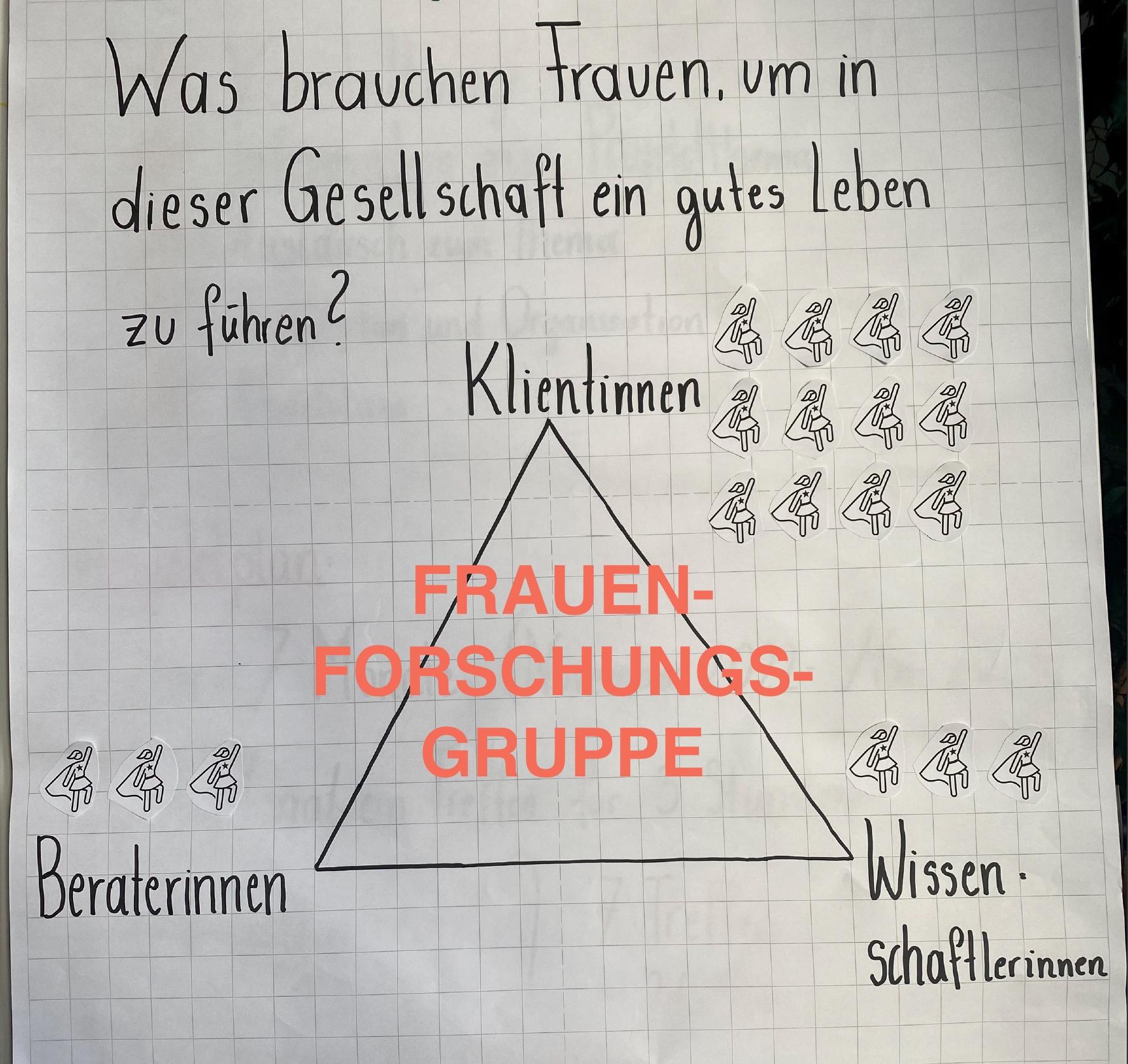
"The Psychological is Participatory - Feminist critical participatory action research with women's counselling centres and their clients" (2022-2023), funded by the Austrian Science Fund FWF (TCS 112 Top Citizen Science) and co-financed by the Women and Family Department of the Arbeiterkammer.
Project management: Ass.-Prof. Dr. Nora Ruck
Project team: Dr. Barbara Rothmüller, Julia Struppe-Schanda, MSc.
In the project we are conducting research together with Dr. Bettina Zehetner from the counselling centre Frauen* beraten Frauen* and Dr. Sigrid Awart and Dr. Andrea Kaiser-Horvath from the counselling centre Peregrina as well as with 12 clients from both counselling centres*. Prof. Michelle Fine & Prof. María Elena Torre (CUNY), Prof. Thomas Stefan (Postdam) and Prof. Alexandra Rutherford (Toronto) advise us on the Advisory Board of the project. The project is scheduled to be completed in December 2023.
*Participation is restricted to these clients.
Podcast episode
In April 2025, Nora Ruck was a guest on the Österreich forscht podcast Wissen macht Leute - you can listen to the episode here (in German).
This project fulfils version 1.1 of the quality criteria for citizen science projects on Österreich forscht.
United by Crisis?
Participate in archaeological field surveys and/or in cleaning, documenting & interpreting archaeological finds.
A transdisciplinary look at the early Neolithic communities in the Schletz settlement cluster
The project aims to explore the surroundings of the famous Neolithic settlement of Asparn/Schletz (Lower Austria). Numerous human remains suggest a violent attack on this site in the Late Linear Pottery Culture, approx. 7.000 years ago.
Due to its size and earthworks, we assume that Schletz was the central site of a cluster of smaller settlements in surrounding region. By researching these settlements, we hope, among other things, to increase our knowledge on the background of the massacre and on the origin of the people who died in Schletz.
We cordially invite you to work with us as a Citizen Scientist!
In the project, we are searching for Neolithic finds (pottery, stone tools, etc.) at known or suspected sites near Asparn/Schletz together with interested people and collectors. During our surveys, we go over the fields at regular intervals and map the findings that we discover. Later on, we clean them together und create a scientific documentation and evaluation. Here you can find further information on how you can participate as a Citizen Scientist. However, as we have planned a format of intensive cooperation, we have reached the maximum number of Citizen Scientists that can participate in the project. Nevertheless, we can still offer you to join the waiting list for the participation in the project (or possible follow-up projects).
In another part of the project, local middle school students extract and process soil samples from the area of the LPC sites to create an isoscape (= isotope landscape). Through a comparison with Sr isotope ratios of the human remains, this will allow a discussion of whether the people that died in the massacre might have grown up locally or not.
If you are passively interested in the project, you are invited to visit the news page of our website, where we regularly publish news about the project.
Citizen Science Seminar
In January 2025, Johanna Irrgeher, Julia Längauer and Jakob Maurer gave a lecture on 'The Neolithic "Massacre of Asparn/Schletz" - transdisciplinary research with citizen scientists' at the Citizen Science Seminar of BOKU University (in German).
Project partners & cooperation partners
Picture gallery:
-
 Zwentendorf, possible early Neolithic site near to the Zaya-river Zwentendorf, possible early Neolithic site near to the Zaya-river
Zwentendorf, possible early Neolithic site near to the Zaya-river Zwentendorf, possible early Neolithic site near to the Zaya-river -
 Victims of a Neolithic massacre were discovered during archaeological excavations in Asparn/Schletz Victims of a Neolithic massacre were discovered during archaeological excavations in Asparn/Schletz
Victims of a Neolithic massacre were discovered during archaeological excavations in Asparn/Schletz Victims of a Neolithic massacre were discovered during archaeological excavations in Asparn/Schletz -
 Together with Citizen Scientists we do systematic “line walking” for the identification of Neolithic sites Together with Citizen Scientists we do systematic “line walking” for the identification of Neolithic sites
Together with Citizen Scientists we do systematic “line walking” for the identification of Neolithic sites Together with Citizen Scientists we do systematic “line walking” for the identification of Neolithic sites -
 The finds are carefully packed; the find spots are precisely documented with GPS The finds are carefully packed; the find spots are precisely documented with GPS
The finds are carefully packed; the find spots are precisely documented with GPS The finds are carefully packed; the find spots are precisely documented with GPS -
 Newly discovered, unwashed finds „fresh from the field” Newly discovered, unwashed finds „fresh from the field”
Newly discovered, unwashed finds „fresh from the field” Newly discovered, unwashed finds „fresh from the field” -
 Early Neolithic stone tools and potsherds from the Zwentendorf-Hofwiese site Early Neolithic stone tools and potsherds from the Zwentendorf-Hofwiese site
Early Neolithic stone tools and potsherds from the Zwentendorf-Hofwiese site Early Neolithic stone tools and potsherds from the Zwentendorf-Hofwiese site -
 Early Neolithic house (house model in MAMUZ Schloss Asparn/Zaya) Early Neolithic house (house model in MAMUZ Schloss Asparn/Zaya)
Early Neolithic house (house model in MAMUZ Schloss Asparn/Zaya) Early Neolithic house (house model in MAMUZ Schloss Asparn/Zaya) -
 Soil samples are taken by middle school students for the creation of an isotope map Soil samples are taken by middle school students for the creation of an isotope map
Soil samples are taken by middle school students for the creation of an isotope map Soil samples are taken by middle school students for the creation of an isotope map -
 To research the origin of the dead of Schletz, chemical analysis is done on soil samples and human teeth To research the origin of the dead of Schletz, chemical analysis is done on soil samples and human teeth
To research the origin of the dead of Schletz, chemical analysis is done on soil samples and human teeth To research the origin of the dead of Schletz, chemical analysis is done on soil samples and human teeth -
 The core team of the project with scientists from different disciplines is looking forward to working together! The core team of the project with scientists from different disciplines is looking forward to working together!
The core team of the project with scientists from different disciplines is looking forward to working together! The core team of the project with scientists from different disciplines is looking forward to working together!
https://www.citizen-science.at/en/immerse/tag/history#sigProId0cf662b906
The project is funded by:
This project fulfils version 1.1 of the quality criteria for citizen science projects on Österreich forscht.
Memories and Imaginaries
Democratic Citizenship
"Memories and Imaginaries" critically explores with students in Austria what it means to be a citizen. Who can or is allowed to actively participate in the political community? Who can or is not allowed to? We address these questions with the aim of finding collective strategies to confront the state of exclusion and marginalization.
The aim of the research is for researchers to explore the importance of remembering, retelling and re-imagining the past and the future plays in living and participating in a political community.
In every community there are different stories of belonging and exclusion. The particular focus will be on migrant, queer and Jewish memories and imaginaries. In their own ways, they all represent stories of exclusion from Austrian society.
We explore how democratic citizenship works by practicing it on a small scale: Students, artists and researchers come together to learn, share and listen about migrant, queer and Jewish memories and ideas. The Citizen Scientists themselves may also bring and share their own experiences of exclusion.
The project sets new impulses in the field of Citizen Science, as it combines Citizen Science with art-based research. Memories and imaginaries are collective and relational forms of knowledge that are experiential, multi-layered in space and time. Citizen science and art-based research are innovative ways to gain insights into such imaginaries and their potential for democratic citizenship.
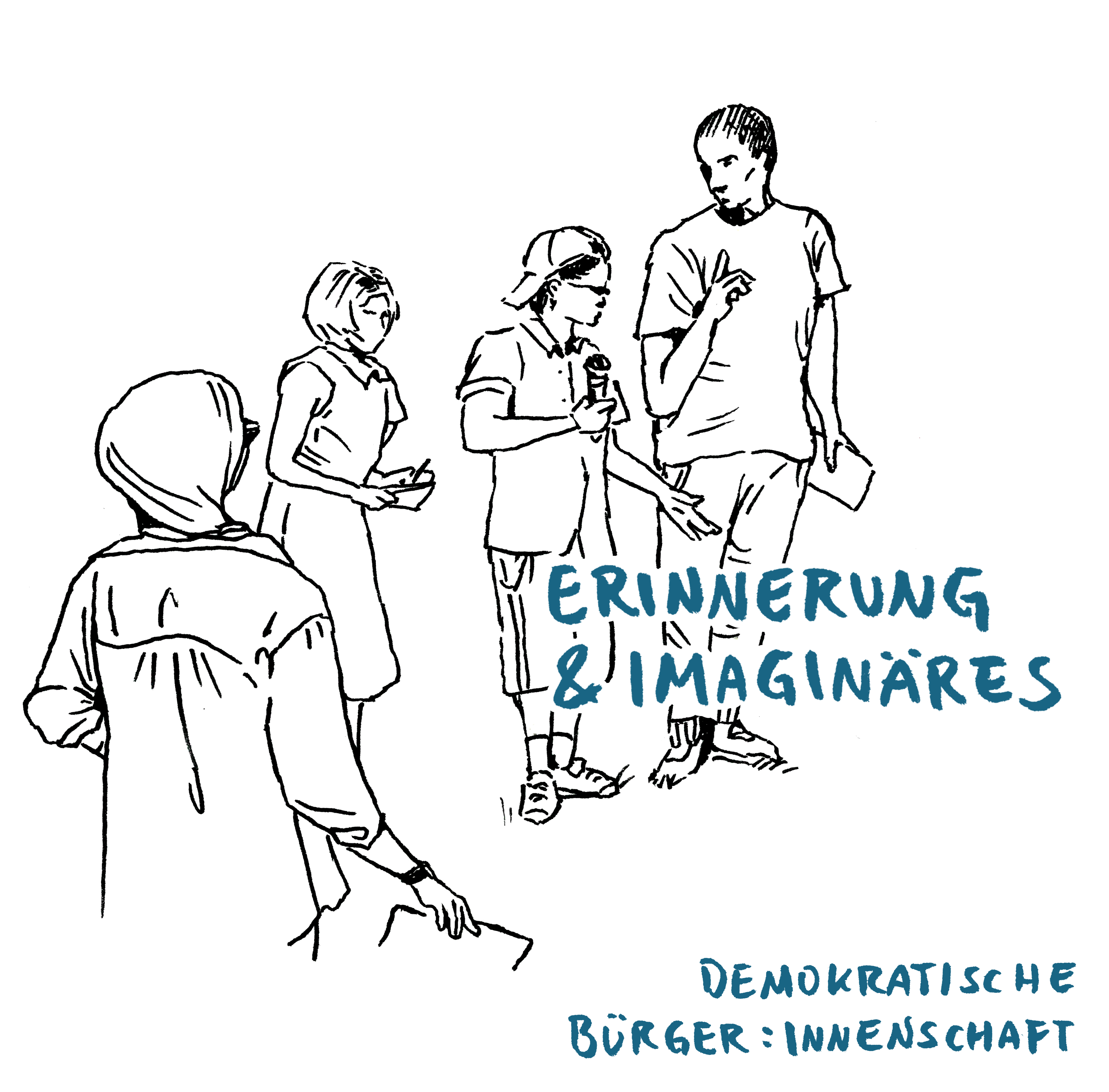
© Felix Deiters
How to participate?
During the co-research period from May to June 2022, a total of three "Remembrance Labs" (May) and one General Assembly (June) took place. The citizen scientists each took part in one of the three labs, which had the same content.
The interim results of all three labs, in the form of graphic recordings and stenographic minutes, were reflected on together in a joint general assembly at the end of June and the collected output was jointly verified.
The Labs artistically took us through the past and present of the three selected communities and enabled collective reflection on how we share situations of exclusion and how we can imagine them if we have not experienced them ourselves or if we do not remember them ourselves (for example because we are too young).
Eating together was as much a part of the collective experience as the mental and physical-affective participation in three group-dynamic, artistically guided exercises.
Artistic inputs were given in each memory lab, in which the Citizen Scientists were also invited to actively participate:
- Rap-poetry with Esra Özmen aka EsRap on the topic of migration,
- Building community by performative story-telling with artist Ndidi Iroh,
- Researching biographies: multi-marginalisations from a jewish perspective.
An expert was invited to each Remembrance Lab to present a short input for the discussion. They came from important civil society organisations:
- Dokumentationsarchiv des österreichischen Widerstandes (DÖW),
- Wiener Wiesenthal-Institut für Holocaust-Studien,
- PH Upper Austria.
The results of the research phase are currently being evaluated and will be published in the form of an artistic book in 2023.
What happens to the contributions of the Citizen Scientists?
The activities during the labs will be documented visually and textually by means of graphic recording (artist Felix Deiters) and a stenographic protocol.
The graphic and stenographic protocols will be included in the book publication "Memories and Imaginaries: Democratic Citizenship". The book will be produced in the last phase of the project (autumn 2022) and presented at a closing event in January 2023.
Contact and research team of the Academy of Fine Arts Vienna
Univ.-Prof. Dr. Marina Gržinić: This email address is being protected from spambots. You need JavaScript enabled to view it.
Dr. Sophie Uitz: This email address is being protected from spambots. You need JavaScript enabled to view it.
Dr. Jovita Pristovšek: This email address is being protected from spambots. You need JavaScript enabled to view it.
This project fulfilled version 1.1 of the quality criteria for citizen science projects on Österreich forscht.
Zeit.shift
Offers active beyond the duration of Zeit.shift
The Zeit.shift project ended in June 2023. The central web offerings continue to be active beyond the project duration. Specifically, the results can be followed via the website. The newly generated web portal is accessible worldwide and the text material provided (several million newspaper pages) is searchable and downloadable. Geodata and content tags can be assigned via an external platform and the online game Ötzit! is freely available. However, an evaluation of the generated data, as formulated in the project description, no longer takes place after the end of the project.
What is the Zeit.shift project about?
The aim of the Zeit.shift project is to establish a long-term, cross-border cooperation for the preservation, development and dissemination of the cultural text heritage of Tyrol and South Tyrol from the late 19th and early 20th centuries. Using historical newspapers as a prototype, the text collections are to be preserved in the long term and made accessible to the general public in a web portal. This offers the opportunity to learn more about one's own cultural heritage and to learn to appreciate historical texts as a source for exciting discoveries. An important focus of the project is the active involvement of the population. Interested citizens are invited to participate and can contribute to the text indexing by annotating the text material online. Together with citizens, relevant key terms and the correct location of the text excerpts will be added in order to improve the usability and searchability of the historical text material.
How can one participate?
Via the Historypin platform, interested citizens can participate in text indexing by describing the content of advertisements in historical daily newspapers and geolocating them via Google Maps in order to virtually reconstruct the shopping streets of 100 years ago. In this way, one can gain an insight into which products were traded and which events took place in yesterday’s world. One discovers professions and trades, some of which no longer exist, and has the opportunity to draw one's own comparisons of what can be found in the places mentioned today. This is only a small excerpt of the variety of topics offered by the advertisements in the press of that time - a voyage of discovery into the world of our ancestors. Participation is not tied to a specific time or place; all you need is internet access and a computer or smartphone. Tutorials will help with questions, and there is also the possibility of contacting the Zeit.shift project staff directly (This email address is being protected from spambots. You need JavaScript enabled to view it.). The citizen science activities are aimed at all citizens and no special knowledge is necessary to participate in the project.
Another citizen science approach in the Zeit.shift project was developed with the gamification application Ötzit!. The online game Ötzit! is about saving Ötzi from dangerous animals by correctly typing out falling words in Fraktur script. A game against time! Ötzit! is primarily aimed at German-speaking pupils aged 11-14, but is open to anyone interested. The aim of the game is to create an awareness of the digitised newspaper collections and to practise reading historical documents in Fraktur script. All data anonymously provided by the players (e.g. typed words) was analysed and used to explore automated OCR corrections via crowdsourcing and to improve the searchability of the digitised collections.
Why is it important and what happens to the data?
The benefit for the citizens is to experience the newspapers as a historical source and to learn something about their own cultural heritage through them. Together with the project team, they discover hidden archival treasures, thus making an invaluable contribution to indexing. In the project, the Zeit.shift portal for archiving, managing, researching and presenting digitised historical daily newspapers of the Tyrolean region was implemented. Using search filters, such as place and family names, time period, etc., the search results can be narrowed down precisely and the search term appears in the full text highlighted in colour. The data generated by the Citizen Science activities serve as support for the computer-linguistic analysis (e.g. correction of recognition errors in digitised texts in Fraktur script).
Photo gallery
-
 Unterinntaler Bote, 03.01.1908, S. 6 Unterinntaler Bote, 03.01.1908, S. 6
Unterinntaler Bote, 03.01.1908, S. 6 Unterinntaler Bote, 03.01.1908, S. 6 -
 Schwazer Lokal-Anzeiger, 16.04.1927, S. 4 Schwazer Lokal-Anzeiger, 16.04.1927, S. 4
Schwazer Lokal-Anzeiger, 16.04.1927, S. 4 Schwazer Lokal-Anzeiger, 16.04.1927, S. 4 -
 Unterinntaler Bote, 03.01.1908, S. 6 Unterinntaler Bote, 03.01.1908, S. 6
Unterinntaler Bote, 03.01.1908, S. 6 Unterinntaler Bote, 03.01.1908, S. 6 -
 Reuttener Nachrichten, 04.07.1930, S. 3 Reuttener Nachrichten, 04.07.1930, S. 3
Reuttener Nachrichten, 04.07.1930, S. 3 Reuttener Nachrichten, 04.07.1930, S. 3 -
 Unterinntaler Bote, 03.01.1908, S. 8 Unterinntaler Bote, 03.01.1908, S. 8
Unterinntaler Bote, 03.01.1908, S. 8 Unterinntaler Bote, 03.01.1908, S. 8 -
 Unterinntaler Bote, 03.01.1908, S. 10 Unterinntaler Bote, 03.01.1908, S. 10
Unterinntaler Bote, 03.01.1908, S. 10 Unterinntaler Bote, 03.01.1908, S. 10 -
 Unterinntaler Bote, 03.01.1908, S. 7 Unterinntaler Bote, 03.01.1908, S. 7
Unterinntaler Bote, 03.01.1908, S. 7 Unterinntaler Bote, 03.01.1908, S. 7 -
 Reuttener Nachrichten, 27.06.1930, S. 4 Reuttener Nachrichten, 27.06.1930, S. 4
Reuttener Nachrichten, 27.06.1930, S. 4 Reuttener Nachrichten, 27.06.1930, S. 4 -
 Schwazer Lokal-Anzeiger, 16.04.1927, S. 4 Schwazer Lokal-Anzeiger, 16.04.1927, S. 4
Schwazer Lokal-Anzeiger, 16.04.1927, S. 4 Schwazer Lokal-Anzeiger, 16.04.1927, S. 4 -
 Reuttener Nachrichten, 01.02.1929, S. 4 Reuttener Nachrichten, 01.02.1929, S. 4
Reuttener Nachrichten, 01.02.1929, S. 4 Reuttener Nachrichten, 01.02.1929, S. 4
https://www.citizen-science.at/en/immerse/tag/history#sigProId4ff201727f
Video

This project fulfilled version 1.1 of the quality criteria for citizen science projects on Österreich forscht.
ExploreAT!
ExploreAT! - exploring Austrias culture through the language glass
The exploreAT! project aims to provide unique insights into the diversity of the German language (especially in Austria). With the help of innovative digital tools, a unique collection of Bavarian dialects in the region of the former Habsburg Monarchy (1911-1998) is being explored. The extensive corpus contains 200,000 main lemmas in about 4 million entries. The collection includes a 5 volume dictionary with about 50,000 main lemmas, covering a period from the beginnings of the German language to the present day. In addition, there are other databases, such as an image database attached to the document database, which includes illustrations and sketches made by the collectors to explain meanings. Within the database, interfaces for the use of Linked Open Data (LOD) will be created in order to be able to use ontological resources and thus ensure the representation of conceptual and semantic information.
Within the project, different working groups and scientific areas are covered. A main interest is to build an effective, reusable IT infrastructure, adapted to the research area, to provide historical-lexicographic content. This will link knowledge from European and global infrastructures and enable both scholars and laypersons to make general or specialized searches. From a humanities and social science perspective, insight into how users engage with content and what features they can explore in the corpus is significant in advancing knowledge about the evolution of German and human language in general.
exploreAT! investigates cultural aspects of language. Citizens are directly involved in the design of the research, the research process and its results using open innovation practices and methods.
This project fulfilled version 1.1 of the quality criteria for citizen science projects on Österreich forscht.


